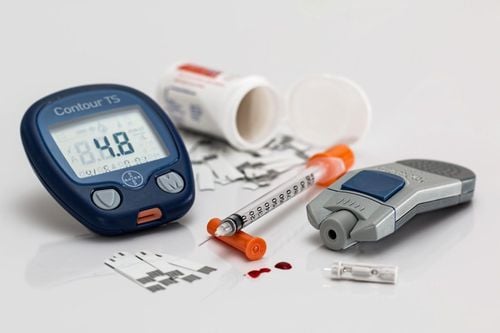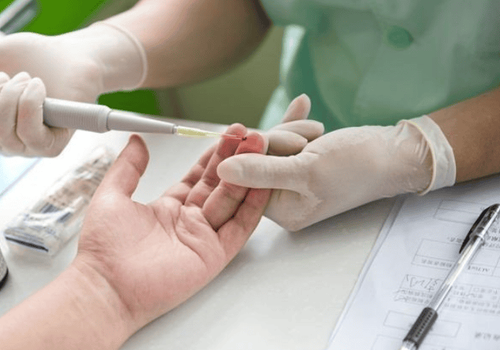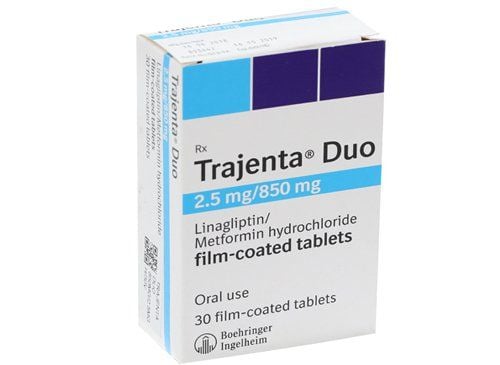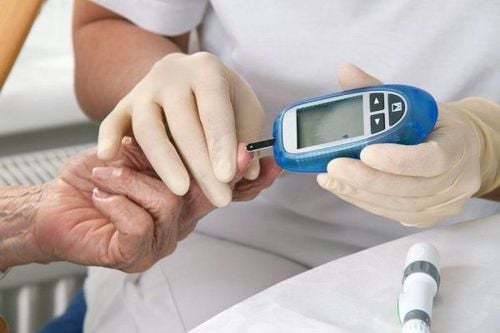This is an automatically translated article.
The article was written by MSc Bui Minh Duc - Head of General Internal Medicine Unit, Department of General Internal Medicine - Vinmec Times City International General Hospital.Screening is recommended for type 2 diabetes because reliable tests are available, it helps with lifestyle changes, and drugs reduce the adverse sequelae of the disease, even in people who are initially asymptomatic symptom.
1. Treatment of diabetes
Management - Treatment of type 2 diabetes includes:
Losing weight Healthy eating Regular exercise Maybe, diabetes medication or insulin therapy Blood sugar monitoring These steps will help keep your blood sugar is close to normal, which can delay or prevent complications.
1.1 Lose Weight Losing weight can lower your blood sugar. Losing just 5 to 10 percent of your body weight can make a difference, although a sustained weight loss of 7 percent or more of your starting weight seems to be ideal. That means a 82kg person would need to lose 5.9kg to make an impact on blood sugar.
Portion control and eating healthy foods are simple ways to start losing weight.
1.2 Eat healthy Contrary to popular belief, there is no specific diabetes diet. However, it's important to focus on your diet:
Fewer calories Fewer refined carbohydrates, especially sweets Less saturated fat foods More vegetables and fruits More fiber foods A dietitian can help you come up with a meal plan that fits your health goals, food preferences, and lifestyle. They can also teach you how to track your carbohydrate intake and tell you about how many carbohydrates you need to eat at meals and snacks to keep your blood sugar more stable.

1.3 Physical Activity Everyone needs regular aerobic exercise and people with type 2 diabetes are no exception. Consult your doctor before starting an exercise program. Choose activities you enjoy, such as walking, swimming, and biking, so you can make them part of your daily routine. Aim for at least 30 to 60 minutes of aerobic exercise moderate (or 15 to 30 minutes) most days of the week. A combination of exercises — aerobic exercise, such as walking or dancing most days, combined with resistance training, such as weight training or yoga twice a week — gives More benefits than just one type of exercise.
Remember that physical activity lowers blood sugar. Check your blood sugar before any activity. You may need to eat a snack before exercise to help prevent low blood sugar if you take diabetes medication that lowers blood sugar.
It is also important to reduce the time you spend in inactive activities, such as watching TV. Try to move around a little every 30 minutes.
1.4 Monitor your blood sugar Depending on your treatment plan, you may need to check and record your blood sugar every hour and then, if you are taking insulin, several times a day. day. Ask your doctor how often you need to check your blood sugar. Careful monitoring is the only way to ensure that your blood sugar remains within the treatment target range.
1.5 Diabetes medication and insulin therapy Some people with type 2 diabetes can achieve blood sugar levels with diet and exercise alone, but many also need diabetes medication or therapy. insulin method. The decision about which medication is best depends on many factors, including your blood sugar level and any other health problems you have. Your doctor may combine medicines from different classes to help you control your blood sugar in different ways.

Examples of possible treatments for type 2 diabetes include:
Metformin (Glucophage, Glumetza...). Usually, metformin is the first drug prescribed for type 2 diabetes. It works by reducing the liver's production of glucose and improving your body's sensitivity to insulin so that your body uses insulin more efficiently. . Nausea and diarrhea are possible side effects of metformin. These side effects may go away as your body gets used to the medicine or if you take the medicine with a meal. If metformin and lifestyle changes are not enough to control your blood sugar, other oral or injected medications may be added.
Sulfonylureas . These drugs help your body secrete more insulin. Examples include glyburide (DiaBeta, Glynase), glipizide (Glucotrol), and glimepiride (Amaryl). Side effects may include low blood sugar and weight gain. Meglitinide . These drugs — such as repaglinide (Prandin) and nagetlinide (Starlix) — work like sulfonylureas by stimulating the pancreas to secrete more insulin, but they act more quickly and the length of their action in the body. shorter. They also carry a risk of causing low blood sugar and weight gain. Thiazolidinediones . Like metformin, these drugs — including rosiglitazone (Avandia) and pioglitazone (Actos) — make the body's tissues more sensitive to insulin. These drugs have been linked to weight gain and other serious side effects, such as an increased risk of heart failure and anemia. Because of these risks, these drugs are usually not the first-choice treatment. GLP-1 receptor agonist. These injections slow digestion and help lower blood sugar levels. Their use is often associated with weight loss. Possible side effects include nausea and an increased risk of pancreatitis. Exenatide (Byetta, Bydureon), liraglutide (Victoza), and semaglutide (Ozempic) are examples of GLP-1 receptor agonists. Recent research has shown that liraglutide and semaglutide can reduce the risk of heart attack and stroke in people at high risk for these conditions.
SGLT2 inhibitors. These drugs prevent the kidneys from reabsorbing sugar into the bloodstream. Instead, sugar is excreted in the urine. Examples include canagliflozin (Invokana), dapagliflozin (Farxiga), and empagliflozin (Jardiance). Drugs in this class of drugs may reduce the risk of heart attack and stroke in people at high risk for these conditions. Side effects can include vaginal yeast infections, urinary tract infections, low blood pressure, and a higher risk of diabetic ketoacidosis.
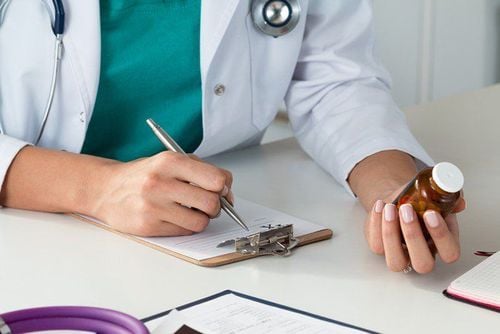
Insulin . Some people with type 2 diabetes need treatment with insulin. In the past, insulin therapy was used as a last resort, but today it is often prescribed earlier because of its benefits. Low blood sugar (hypoglycemia) is a possible side effect of insulin. When taken by mouth, insulin is broken down, so insulin injections must be given. Depending on your needs, your doctor may prescribe a mixture of insulins to use throughout the day and night. There are many types of insulin, and each works in a different way.
Usually, people with type 2 diabetes start insulin with a nightly long-acting injection, such as insulin glargine (Lantus) or insulin detemir (Levemir). Discuss the pros and cons of different medications with your doctor. With your doctor, you can decide which medication is best for you after considering many factors, including cost and other aspects of your health.
In addition to diabetes medications, your doctor may prescribe low-dose aspirin therapy as well as blood pressure and cholesterol-lowering medications to help prevent heart and blood vessel disease.
Vinmec International General Hospital is one of the hospitals that not only ensures professional quality with a team of leading medical doctors, a system of modern equipment and technology. The hospital provides comprehensive and professional medical examination, consultation and treatment services, with a civilized, polite, safe and sterile medical examination and treatment space. Customers when choosing to perform tests here can be completely assured of the accuracy of test results.
Please dial HOTLINE for more information or register for an appointment HERE. Download MyVinmec app to make appointments faster and to manage your bookings easily.






